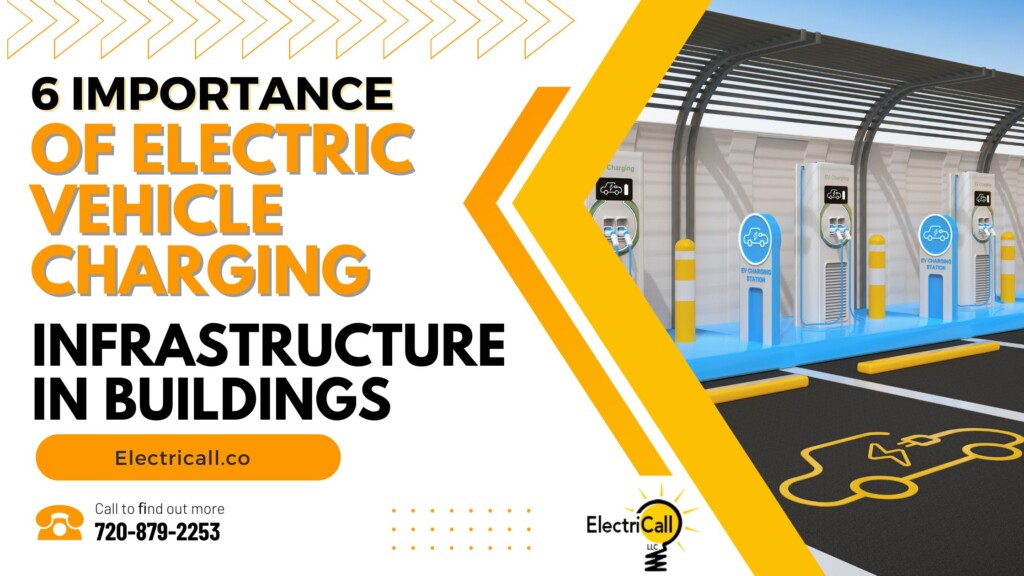
6 Importance Of Electric Vehicle Charging Infrastructure In Buildings
With the growing adoption of electric vehicles, incorporating EV charging units in buildings is gradually becoming a necessity. However, the pace at which the charging units are being implemented is slower than the growth of EV ownership.
This imbalance has led to long wait lines at charging stations and limited access to charging options. So, an efficient charging infrastructure is essential considering the growing transition to electric vehicles.
Promotes EV Adoption
More people find EVs to be a viable option, especially if access to electric vehicle charging stations is assured. The convenient charging options make potential EV owners more inclined to switch to electric vehicles. This is because all their concerns, from range anxiety to charging availability, are addressed.
Improved Energy Efficiency
Buildings equipped with EV charging stations can use solar panels or wind turbines as electricity generators to charge the EVs. Incorporating solar systems reduces carbon emissions and helps lower electricity costs.
Contributes To Grid Integration And Management
Integrating intelligent energy management systems makes optimizing EV charging cycles easier. This results in lower electricity bills and reduced energy wastage, as charging will be scheduled for off-peak hours when electricity rates are lower. Additionally, using smart technology, charging will be prioritized based on renewable energy availability, which makes it easier to balance the loads on the electrical grid, avoiding peak demand periods and reducing strain on the grid.
Addresses Range Anxiety
EV owners often worry about their battery’s charge completing a specific journey and the probability of charging stations. When drivers know they can access the charging locations in any building, they needn’t worry about running off battery power. This assurance alleviates the anxiety of EV ownership and makes it more practical and appealing.
Improves Property Value
Buildings with EV charging infrastructure are more appealing and attractive to tenants and buyers who own electric vehicles as the convenience of charging your car at home after work is a great option for anyone thinking of buying an EV. Additionally, not all buildings in the US, for instance, offer the charging service. Offering this infrastructure allows landlords to charge slightly higher rents and parking fees with charging capabilities.
6 Steps To Making A Building EV Ready
Here are the key steps to guide you when implementing the EV charging infrastructure in buildings.
Find Out If There Is Interest Within The Community
Find out the building’s owners’ and residents’ opinions on electric vehicles and installation of its charging infrastructure. Remember, the goal is to understand whether there is appropriate demand to guide your decisions on installing the charging infrastructure in the building.
Assess the Energy Demand
Analyze and understand the building’s energy consumption patterns to understand the probable impact of EV charging on the current load or, for a more professional perspective, engage with an Arvada electrician in Denver, CO, for a proper energy assessment. This will help you determine the required building upgrades and the number of charging stations sufficient to meet the demand.
Develop A Detailed Plan For The EV Infrastructure Design
With the help of a licensed electrician in Arvada, create a detailed plan for the general charging infrastructure with specific locations for the charging points. Your EV-ready solution should consider the proximity of parking to power sources in order to make it easier for all users.
Install And Integrate With Energy Management System
A professional electrical contractor will help you prepare the building’s charging system’s backbone. Energy management systems will also be integrated into the charging infrastructure. This would be helpful for proper load balancing, optimized charging, and real-time energy consumption monitoring.
What Charging Level Should You Choose?
There are EV charging levels from Level 1 to 3. Your choice depends on charging speed, installation requirements, and overall cost. Level 1 EV charging delivers a range of 2 to 5 miles per hour from a 120-volt outlet and is the best for overnight charging.
Level 2 has faster charging speeds and delivers a range of between 10 and 30 miles per hour from a 240-volt outlet. Compared to charging levels 1 and 2, portable DC fast charging (level 3) is the best and fastest, recharging your battery at 3 to 20 miles per minute.
Level 3 chargers use a high voltage output of 400-900 volts, which is why they are not installed at home. Very few residents have the high voltage necessary for level 3 charging.
In conclusion, incorporating EV charging infrastructure in buildings contributes to grid integration and management while enhancing property value. If you need a reliable electrician to consult on installing EV charging infrastructure, contact Arvada electricians for assured help.



